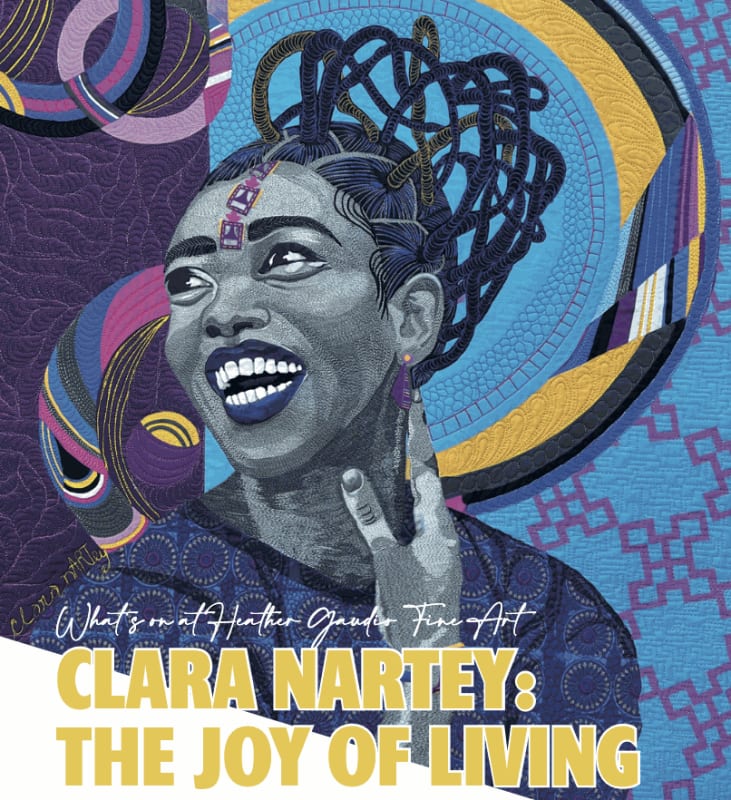Color and joy have descended in downtown New Canaan at Heather Gaudio Fine Art PROJECTS. The show features richly saturated portraits and figurative works created with thread and embroidery by Clara Nartey. For the artist, these works are as much emotive expressions of elation as they are a representation of a very personal journey. Nartey’s practice mixes an aesthetic history that explores culture and identity through a traditional medium.
Born in Ghana, Nartey moved to New York, where
she earned her MBA, then moved to Massachusetts,
before settling permanently in Connecticut. As was
the tradition in her family, she’d learned to stitch and
embroider from her mother, but for Nartey, the sewing
machine represented a respite from the world of
finance. Never would she have envisioned becoming
a full-time artist with said machine – it took the
economic downturn of 2008 to present her with new
opportunities. With a change in career, Nartey was
able to dedicate more time to artistic investigations,
developing collaged explorations of color and abstract
patterns that reflected her culture.
As she perfected her embroidery techniques and
began to expand her lexicon into quilted patchwork
designs, the self-taught artist had an experience which
was to have a lasting personal and artistic impact.
While waiting for an interview at her daughter’s
private school, Nartey encountered an African
American woman proudly wearing her hair naturally.
Centuries of Eurocentric norms have dictated the
aesthetic standards for women in society, particularly
in a professional setting. African women have had to
conform to meet these norms by treating their naturally
curly hair with chemicals and straighteners. Nartey
realized that years of self-negation and wanting to fit
in had denied her from embracing her authenticity. “It
took a lot of courage, and it was a very personal journey,”
the artist states, for her to allow her hair to regain its
natural form. This pivotal moment also saw a shift in
her artwork, which turned from abstracted patterned
shapes to depicting the figure. Nartey’s visual language
shifted to disrupt the societal understanding of beauty
to where Black women could see themselves
and imagine new possibilities.
Although stitchwork has traditionally been associated
with domesticity and has been dismissed as a
‘lesser art’, the medium is enjoying a revival and is
justifiably being recognized as a valid fine art form.
Nartey’s process combines this traditional medium
with new technologies, by starting out with drawing
her subjects on an iPad, much like David Hockney
adopted in the early aughts. She always begins with
a line drawing of the subject’s face, which were
originally sourced from stock imagery and today are
generated from people she personally knows. Nartey
then adds the hairstyle, clothes, symbols, decorative
elements, and backgrounds that reveal a story. These
images are then printed on a large canvas which the
artist dubs her ‘underpainting’.
The canvas is then backed with three or four other
canvases and thicker materials to support the weight
of the stitching and fabric collage to follow. Nartey
then takes to the sewing machine, stitching
layers upon layers of embroidery thread over the
underpainting, at times deviating from the original
design. While her process is meticulous, she does
allow for intuition and improvisation to take place.
Nartey never really knows what type of stitching is
going to be applied until the moment she is working
on the piece. Just as an artist uses pencil or paint to
generate a line, add a highlight or deepen a shadow,
so does Nartey use thread. Its direction and weight
render the desired values, contrasts, and textures.
she states coyly. The artist estimates that each
tapestry has over two thousand yards of thread.

